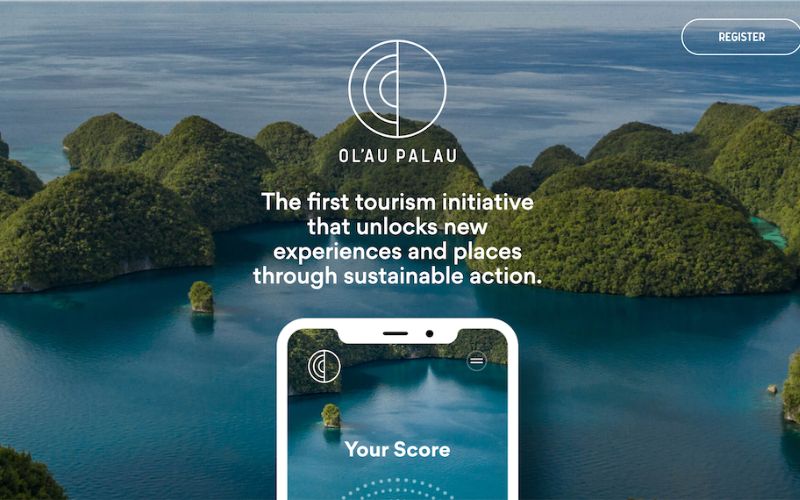
26 May Palau Pledge
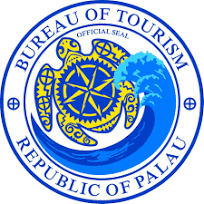
Palau Visitor Pledge &
Sustainable Tourism Funding
Country: Palau
Lead Agency: Palau Legacy Project and Palau
Bureau of Tourism
Along with Iceland, the small Pacific island nation of Palau was an early innovator in destination pledges for visitors. Launched just 6 months after the Icelandic Pledge in December 2017, the Palau Pledge went further – integrating the visitor commitment into the border arrival process and linking it to a visitor sustainability fee of $100 USD per visitor.
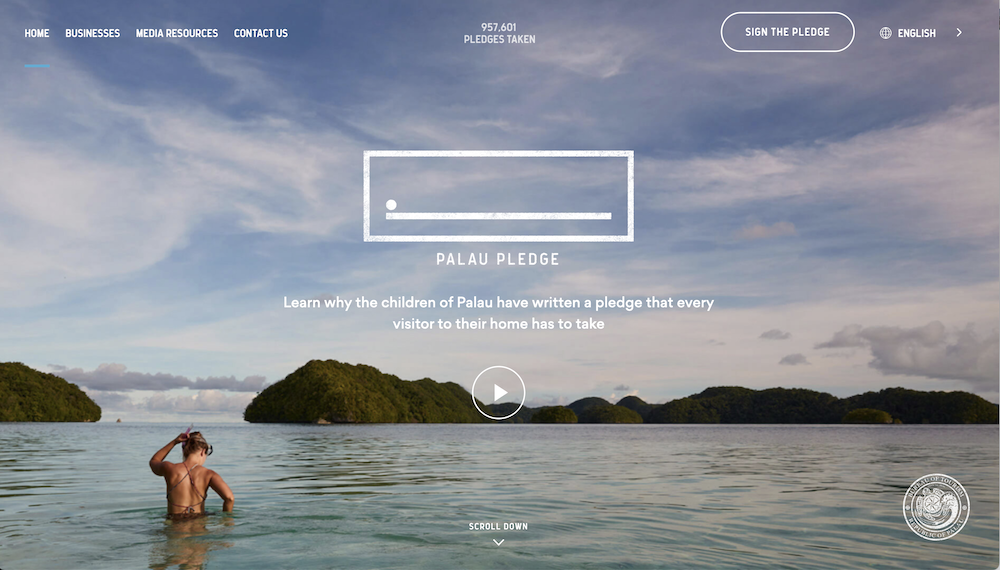
Image from the Palau Pledge
Located in the Western Pacific, the Palau archipelago of more than 500 islands is home to one of the world’s largest marine sanctuaries and a destination for nature lovers and divers. More than half of the island nation’s economy is reliant on tourism.
The Palau Pledge was an outcome of advocacy by a not-for-profit organization – the The Palau Legacy Project, which was set up to protect the natural wildlife and environment in Palau and to make tourism more sustainable. Nicolle Fagn of Palau and her co-founders Jennifer Gibbons, Laura Clarke and Nanae Singeo saw the degradation of the natural environment in Palau caused by tourism and developed the idea of the Palau Pledge.
The government, Palau International Airport and Palau Tourism Bureau all backed the pledge and in a world first – the pledge was added to the arrival process – with a stamp added to the passport, with the visitor asked to sign their commitment to the Pledge.
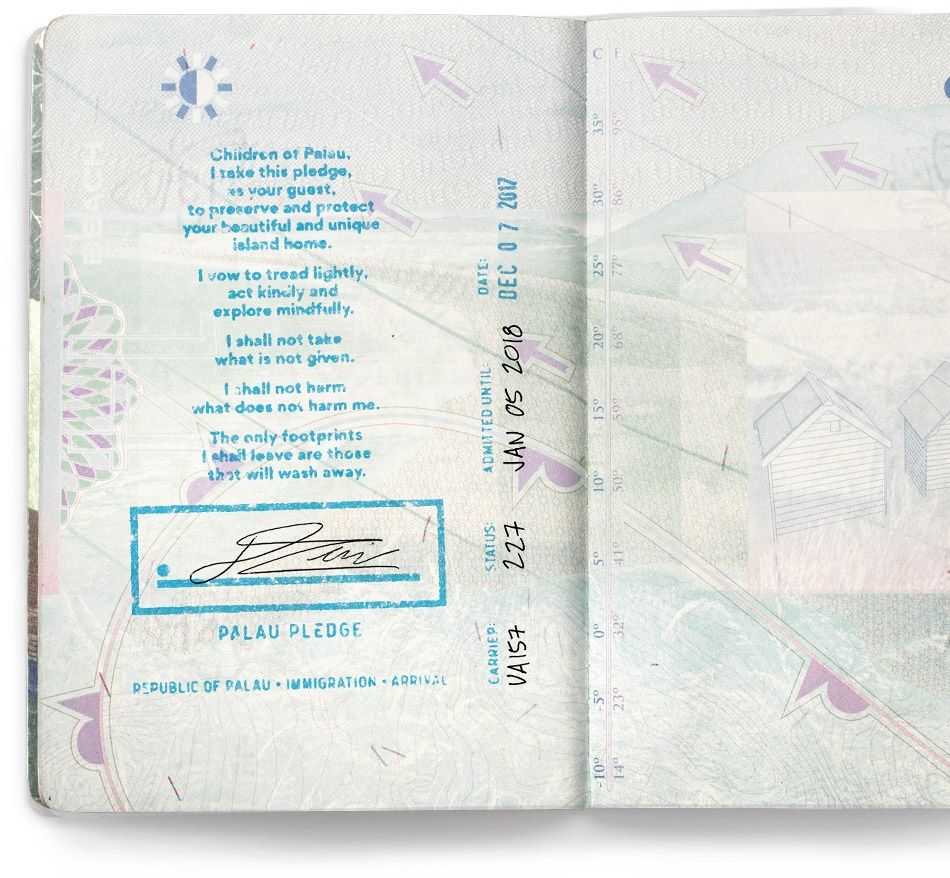
Image from the Palau Pledge
The Palau Pledge has generated significant international media attention since its launch and support from influencers like actor and activist Leonardo DiCaprio, former US Secretary of State John Kerry, and conservationist Sylvia Earle.
The goals of the Palau Pledge are supported by visitor arrival fees focused on the sustainability goals of Palau. Building on some earlier and more modest visitor arrival fees, in 2018, Palau introduced the Palau Pristine Paradise Environmental Fee; a $100 USD entry fee paid by all visitors. Though focused on sustainability initiatives, an increasing majority of the tax revenue (around 60%) has been used by the airport and government for purposes outside of sustainable tourism. (See this University of Hawaii article for more information on this division of the fee in Palau and ‘green’ visitor fees more generally). This ‘siphoning’ of visitor taxes and fees – even if supposedly ‘dedicated, for purposes outside of tourism or sustainability’ is a widespread problem around the world. Indeed as research and analysis from Miles Partnership, Group Nao, Civitas and other partners shows, an estimated 90%+ of the hundreds of billions of dollars collected internationally in taxes and fees each year from visitors goes to consolidated government revenue and purposes outside of tourism.
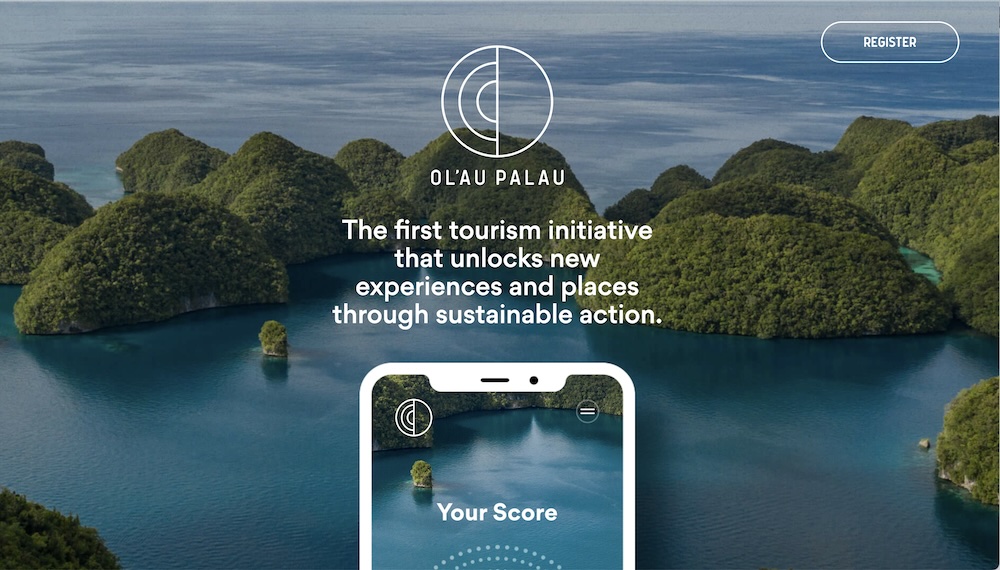
Image from the Palau Pledge
The Palau Pledge has developed an innovative range of media channels to communicate its message. This includes Ol’au Palau – a mobile app that shares visitor information on special natural locations and experiences based on the sustainable travel behavior of the visitor. This includes the mode of travel and behavior In this way, the Palau Pledge is:
Inviting the world to access our most treasured natural and cultural wonders, not according to how much you spend, but how gently and respectfully you treat our beautiful but fragile island home
The COVID-19 pandemic dramatically impacted tourism in Palau and impacted the rollout of more ambitious sustainable tourism education initiatives such as Olau Palau. With the recovery in tourism slow (see ‘Why hasn’t tourism recovered in Palau?”), the Palau tourism industry and government have focused their efforts on reconnecting the island to the world and marketing programs to restore visitor arrivals – with less of a short-term focus on sustainable tourism education and destination management. This highlights that sustainable tourism relies on ensurin economic, business and worker sustainability – in addition to a commitment to the natural environment and the cultural and community assets of a destination.

